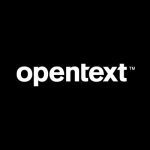Pros: Flexible, Open-ended, Useful default values and fields. Cons: Deep and complex, it takes a while to familiarize
Want Project Management Tool?
I tried OpenProject.org and got frustrated with its performance (because it's Ruby-based ?) and skimpy features. That was what pushed me to go ahead and spend the princely sum of $30 (one time) for JIRA, and two modules (Agile, and Stash, which is a Git web UI), and what deal I've got myself.
JIRA is a platform. And because it is a platform, it is open-ended at what we can use it for. And it's written in Java, deployed in a Tomcat instance, and it gives *me* the choice of which database to use. Kudos for the development team for not strapping customers with MySQL.
Installation
As painless as Wordpress, which is very good. Have a database created (I use PostgreSQL) with its user and password to fill into the web-based installation wizard, and also your SMTP out server settings.
Setup
It takes a bit of reading to get started but given the number of facilities and features available, that's to be expected. Some kind of best-practice steps would be helpful. The most challenging aspect of installation is to get JIRA and Stash to work together. I want both JIRA for Kanban boards, and Issues-tracking, and Stash as a front end to my own Git repository. After bouncing back and forth establishing 2Legged OAuth-based permission, I finally can see my code commits from JIRA, as well as access the Issue from Stash. That is really neat!
Work Tracking
I used JIRA previously in one of the project with my client. We got into the habit of keeping track how many hours I've worked on a particular task by using JIRA, and we got synchronized enough to base our billings on it. Having two measurements is really useful at the end of the project to see the Estimated vs Actual hour. It helped me to estimate more accurately.
Overall, a mature tool that is supported by robust and features that make sense, once we've overcome the complexity and use it for some time.
Disclosure: I am a real user, and this review is based on my own experience and opinions.















JIRA has been developed primarily as an issue and project tracker out of the box, you can use JIRA for requirements management in conjunction with Confluence. Issue Level Requirements
You're able to create a JIRA issue type specifically for requirements with it's own workflow, custom fields and reporting. Subtasks offer a quick way to add and manage your requirements, and you can link related requirements together or with feature requests. I hope this helps.